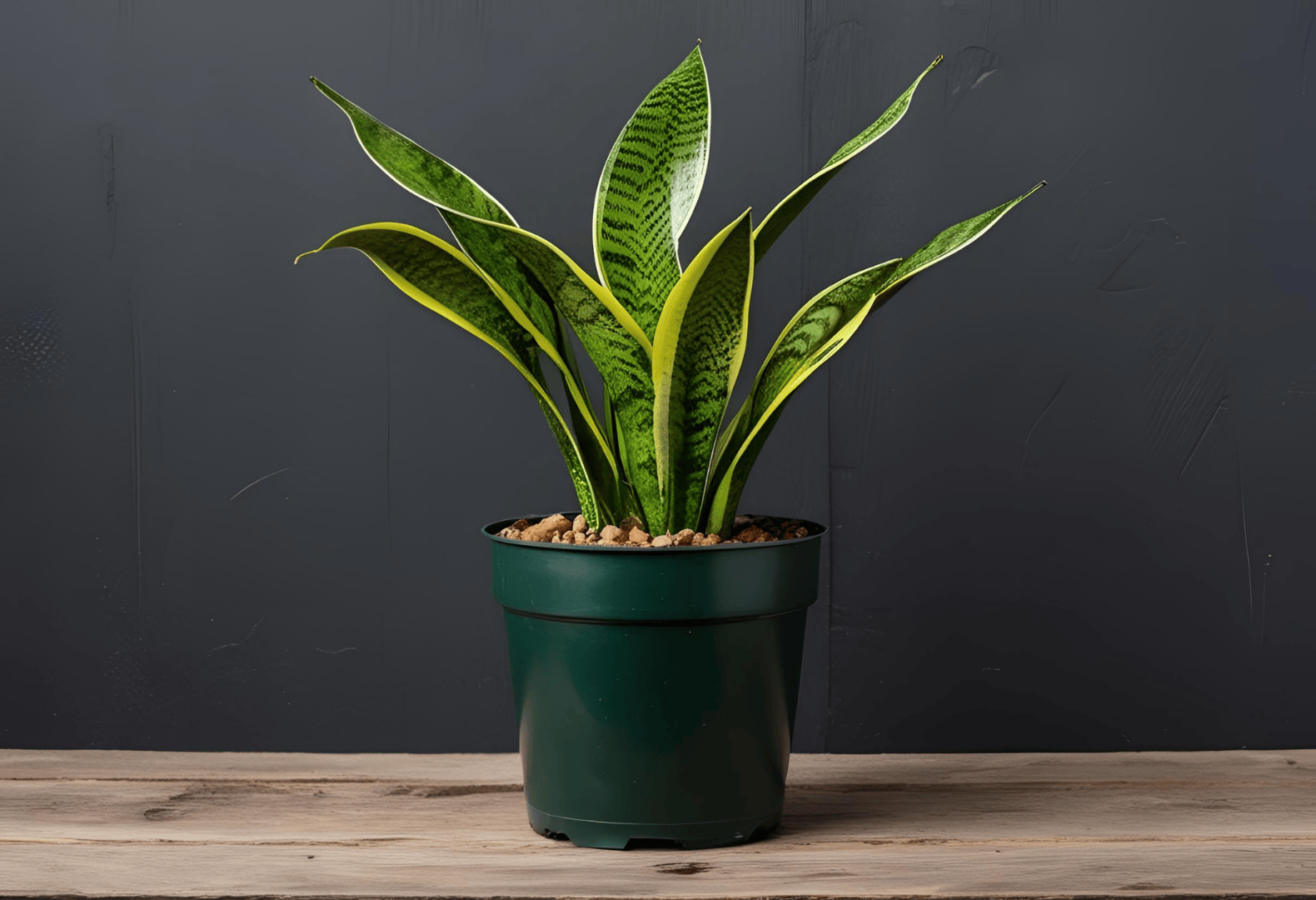Snake Plant, or Sansevieria Trifasciata, has long been a favorite choice for indoor gardening enthusiasts due to its resilience and striking appearance. Known for its long, upright leaves that resemble snakeskin, this low-maintenance plant is perfect for those looking to add a touch of greenery to their home without the need for constant attention. But how do you care for this hardy beauty? Whether you’re a seasoned plant parent or a newcomer to indoor plants, this guide will walk you through everything you need to know to grow a thriving Snake Plant in your home.
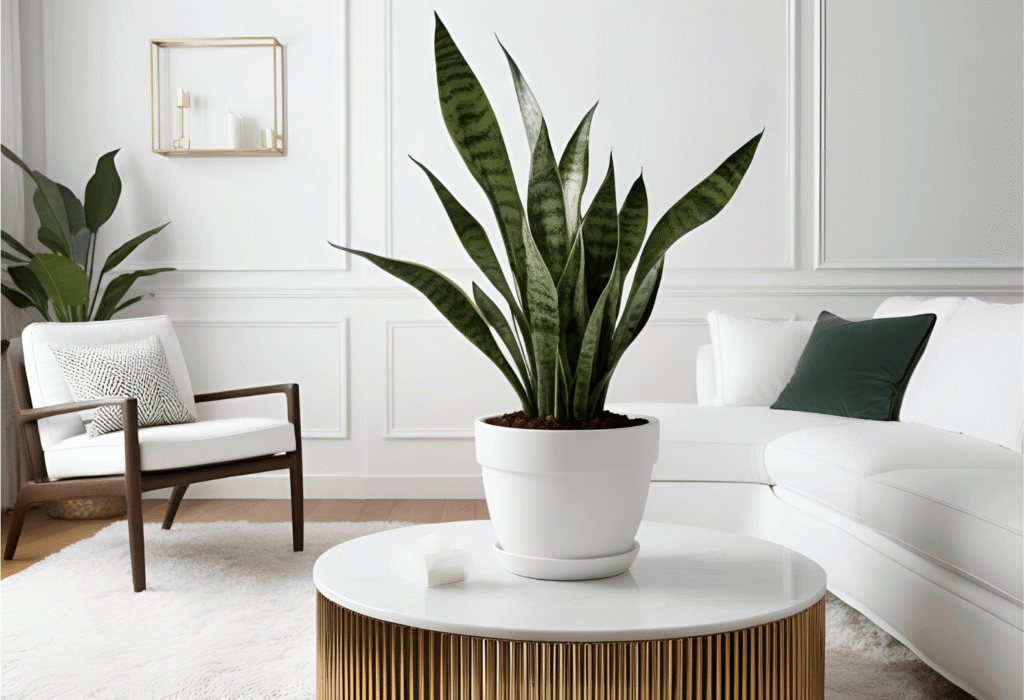
Why Choose a Snake Plant for Your Home?
Snake Plants are incredibly versatile, making them ideal for almost any home environment. Their unique leaf structure adds an interesting aesthetic to any room, whether placed on a bookshelf, in the corner of a living room, or next to your workspace. This plant is not just about looks, though; it also offers several health benefits. The Snake Plant is renowned for its air-purifying properties, helping to remove toxins like formaldehyde, benzene, and xylene from the air. If you’re looking to improve indoor air quality while enhancing the style of your space, the Snake Plant is an excellent choice.
Moreover, Snake Plants thrive on neglect. They are incredibly forgiving, making them perfect for people with busy schedules or those new to plant care.
Planting Your Snake Plant: The First Step
Before getting your Snake Plant, it’s important to choose the right pot and soil. Snake Plants prefer a well-draining soil mix, so a general-purpose cactus or succulent mix is perfect. You can also make your own by combining potting soil with perlite or sand to ensure adequate drainage. A pot with drainage holes is essential to avoid waterlogging and root rot.
Choosing the Right Pot
When it comes to selecting a pot for your Snake Plant, look for one that’s about 1-2 inches larger in diameter than the plant’s root ball. Snake Plants don’t mind being slightly root-bound, so a pot that’s too large may hold too much water, leading to potential issues. Opt for a simple, stylish ceramic or terracotta pot that complements your home’s décor.
How to Grow Snake Plant: Ideal Lighting Conditions
One of the key reasons the Snake Plant is so popular is its ability to adapt to various light conditions. While this plant does best in indirect sunlight, it can also tolerate low light, making it perfect for spaces with less natural light. In fact, Snake Plants can even thrive under artificial light, so don’t worry if you have a dimly lit office or a room that doesn’t get much sunlight.
However, be mindful not to place your Snake Plant in direct sunlight for extended periods, as this can cause its leaves to burn. If you can’t provide indirect sunlight, consider placing it near a window with sheer curtains or in a spot where it will receive light filtered through the glass.
Pro Tip: Rotate your plant every few weeks to ensure even growth and prevent it from leaning toward the light.
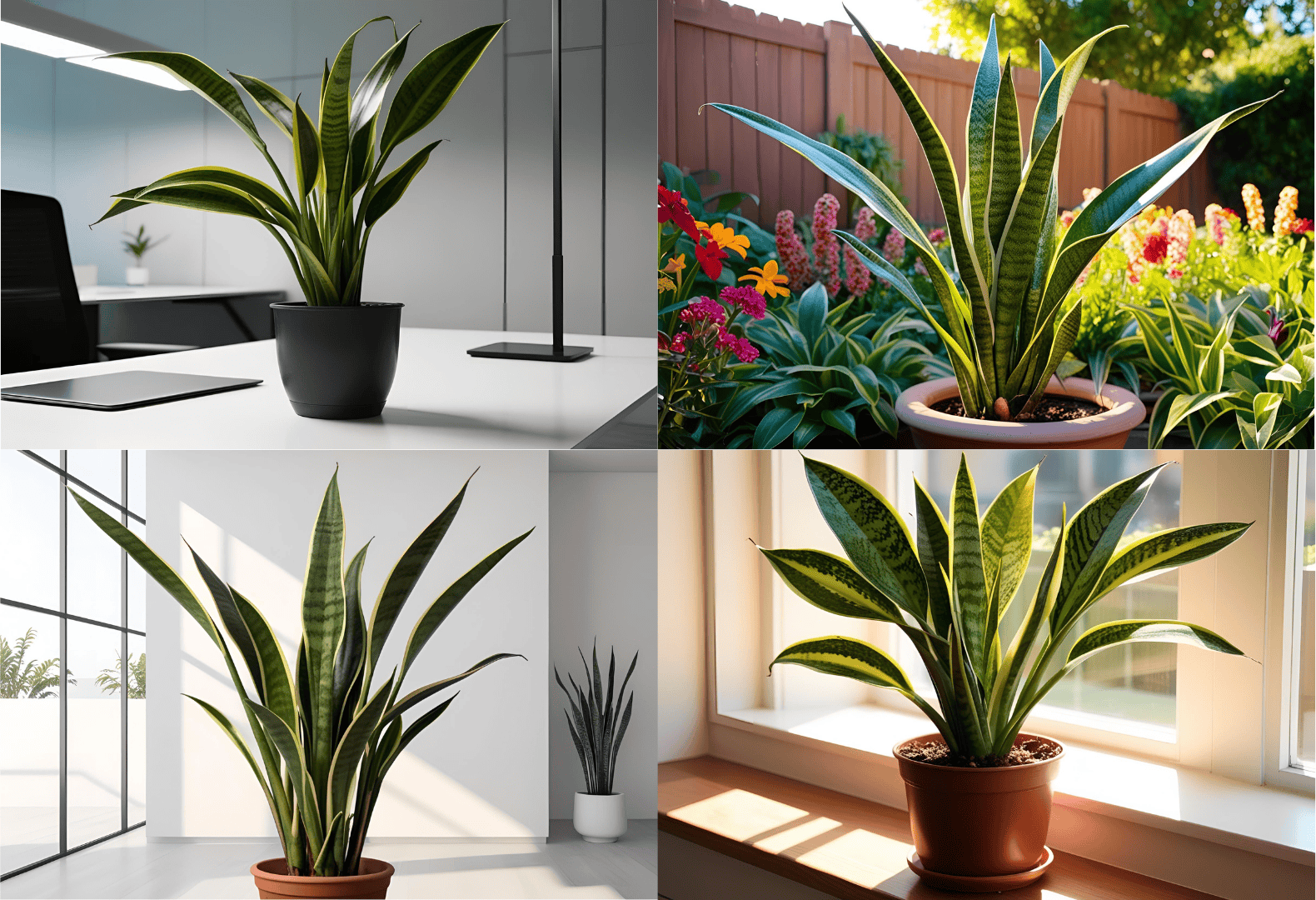
Watering Your Snake Plant: A Key to Success
One of the most common mistakes people make when caring for Snake Plants is overwatering. These plants are highly drought-tolerant, and overwatering can lead to root rot. Allow the soil to become completely dry before the next watering. During the growing season (spring and summer), you should water your Snake Plant every 2-3 weeks, but during the fall and winter, when the plant is dormant, you can water it even less frequently.
How to Water Properly:
To check if your Snake Plant needs water, stick your finger into the soil about an inch deep. As soon as the soil appears dry, it’s time to provide water. Make sure to thoroughly soak the soil, allowing any excess water to drain out of the pot. Never let the plant sit in standing water.
Temperature and Humidity: Creating the Perfect Environment
Snake Plants are native to West Africa, where they grow in warm, humid environments. While they can tolerate a wide range of temperatures, they prefer warm conditions and should be kept away from drafts, especially during the colder months. A temperature range of 60°F to 85°F (15°C to 29°C) is ideal for optimal growth.
When learning how to grow Snake Plant successfully, it’s important to understand that Snake Plants are quite adaptable to humidity. They can tolerate dry air, which makes them perfect for homes with air conditioning or heating systems that dry out the air. However, if your home is particularly dry, you can increase the humidity slightly by misting the leaves once in a while, but avoid excess moisture on the plant’s foliage.
- All Products
Plant Care Humidifier – Ultrasonic, Mute, Intelligent with Remote Control and Aromatherapy
£138.40 Select options This product has multiple variants. The options may be chosen on the product page - All Products
Flame Effect Aromatherapy Humidifier – Ultrasonic Plant Care Device (250 ml)
£29.99 Select options This product has multiple variants. The options may be chosen on the product page - All Products
Ultrasonic Aroma Diffuser with Colorful Night Light – Silent Essential Oil Diffuser with Remote Control
Price range: £76.50 through £83.61 Select options This product has multiple variants. The options may be chosen on the product page - All Products
Portable Humidifier for Plants – Keep Your Greenery Healthy Anywhere
£28.87 Select options This product has multiple variants. The options may be chosen on the product page
Fertilizing Your Snake Plant: Less is More
Snake Plants are slow growers and do not require heavy fertilization. You can fertilize them once during the growing season with a balanced, water-soluble fertilizer diluted to half strength. Apply fertilizer every 4 to 6 weeks throughout spring and summer. During the fall and winter, skip fertilizing altogether as the plant is in a dormant phase.
Natural Fertilizers
If you prefer to go the organic route, you can create natural fertilizers using kitchen scraps like banana peels, egg shells, and coffee grounds. Simply place the scraps in a compost bin, allow them to break down, and then add the nutrient-rich mixture to your plant’s soil.
Repotting Your Snake Plant: When and How
Snake Plants grow slowly, but over time, they may outgrow their pot. If your plant is becoming top-heavy or the roots are visibly growing out of the drainage holes, it may be time to repot. Ideally, repot your Snake Plant every 2-3 years to refresh the soil and provide more room for growth.
When you repot the plant, pick a new pot that’s just slightly larger. Too large a pot can cause the soil to retain too much water, leading to root rot. Be sure to gently remove the plant from its old pot, loosen the roots, and place it in the new pot with fresh, well-draining soil.
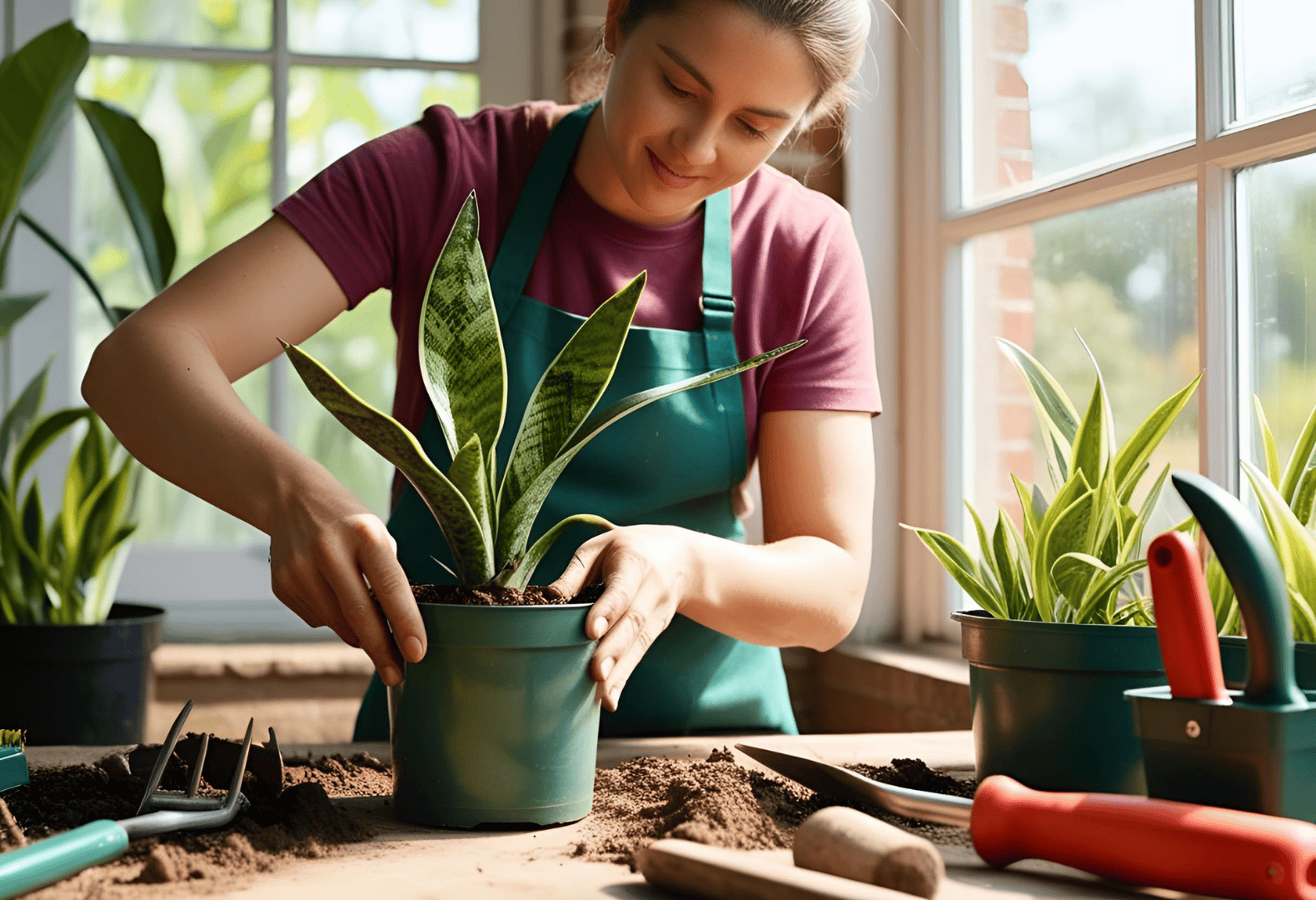
Common Issues and Solutions for Snake Plant Care
Although Snake Plants are remarkably tough, they can still be affected by certain pests and diseases. You might encounter these frequent challenges:
- Yellowing Leaves
Yellow leaves are often a sign of overwatering or inadequate drainage. Be sure to check the soil’s moisture level and adjust how often you water. Trim away any yellowed or damaged leaves to promote healthy new growth. - Brown Tips
Brown tips on the leaves are often a result of underwatering or low humidity. Increase the humidity by misting the plant or using a humidifier, and ensure you’re watering the plant properly. - Pests
Although it’s uncommon, Snake Plants can sometimes attract pests such as mealybugs, spider mites, or aphids. If you notice any, gently clean the leaves with a damp cloth or apply insecticidal soap.
Snake Plant Design Ideas for Your Home
Snake Plants are not just low-maintenance beauties; they can also enhance your home’s design. Here are a few creative ways to incorporate Snake Plants into your décor:
- Statement Piece: Place a large Snake Plant in a decorative pot to create a focal point in your living room or entryway.
- Office Desk Buddy: A small Snake Plant can be an ideal companion for your desk. Its low light tolerance makes it perfect for office spaces, and it adds a touch of nature to your workspace.
- Bedroom Addition: Snake Plants are great for bedrooms as they purify the air while adding a peaceful, calming vibe. Just keep them away from direct sunlight and away from pets, as the leaves can be toxic if ingested.

FAQ
Q: Can Snake Plants survive in low light?
A: Yes, Snake Plants thrive in low light conditions, but they do best in indirect light. When considering how to grow Snake Plant indoors, if placed in a dimly lit area, they may grow more slowly, but they can still survive and purify the air.
Q: How frequently should I water my Snake Plant?
A: During its active growing period, water your Snake Plant every 2 to 3 weeks, and reduce watering even further in winter. Always make sure the soil is dry before adding water.
Q: Can I propagate my Snake Plant?
A: Yes, Snake Plants can be propagated through leaf cuttings. As part of learning how to grow Snake Plant, simply cut a healthy leaf into sections, let them callous for a few days, then place them in soil or water until roots form.
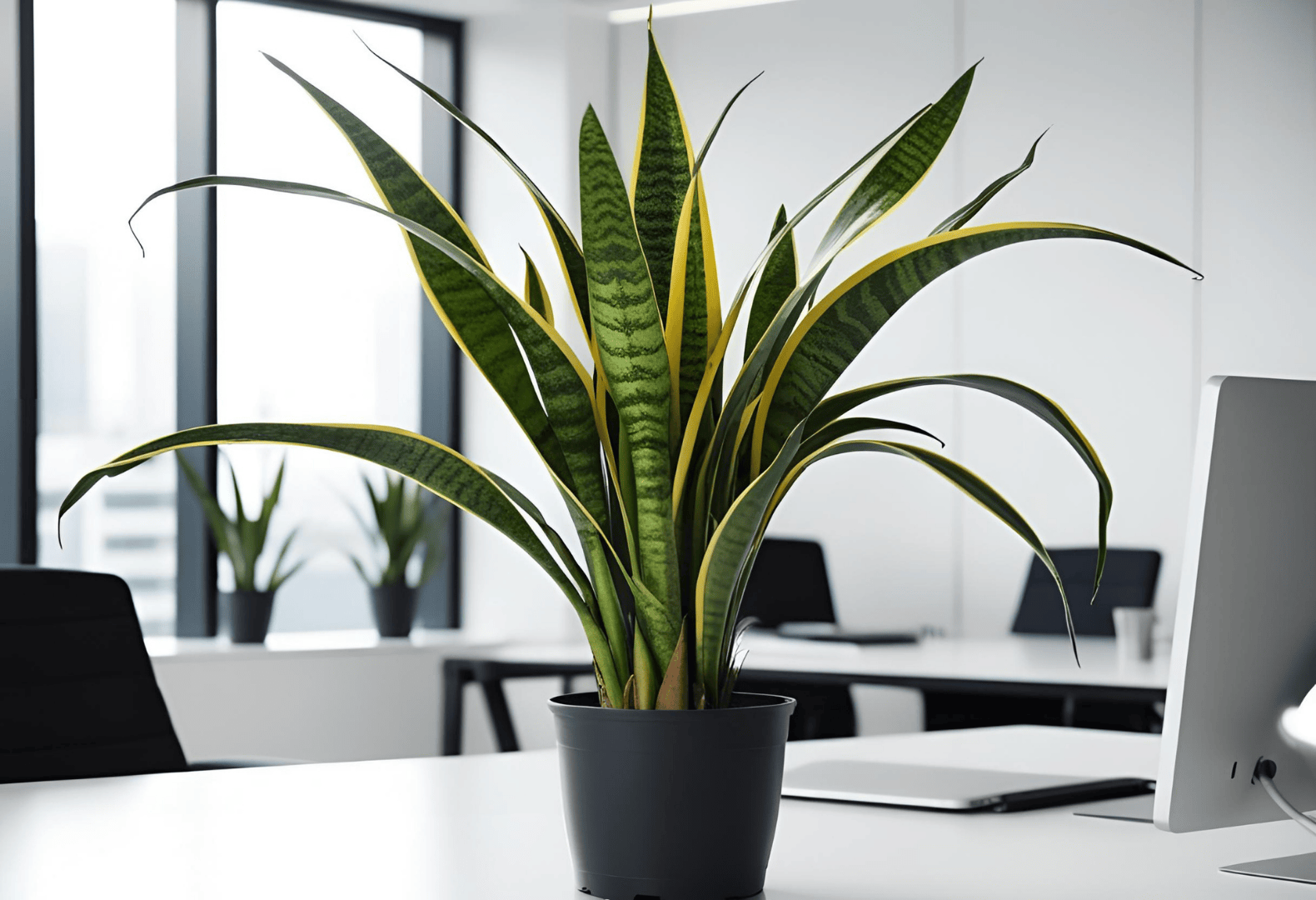
Read More:
- What Is Snake Plant? A Low-Maintenance Marvel for Your Home – Explore the unique benefits of this easy-to-grow houseplant.
- Snake Plant Care Guide: How to Keep Your Sansevieria Thriving – Tips and tricks to maintain a healthy and happy Snake Plant.
Plant Profile

Common Name

Plant Type

Mature Size

Sun Exposure

Soil Type

Soil pH

Bloom Time

Color

Hardiness Zones

Native Area

Humidity

Lighting

Temperature

Difficulty

Hibernation

Toxicity







